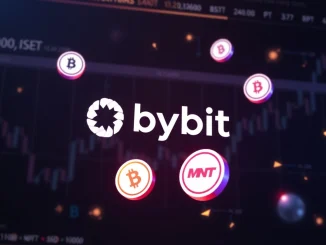
The cryptocurrency world was recently rocked by news of a significant security incident involving **BigONE Exchange**. A staggering sum, reportedly over $27 million, was siphoned off the platform in an exploit that sent ripples of concern across the digital asset community. This incident serves as a stark reminder of the persistent challenges in maintaining robust security within the fast-evolving blockchain space.
What Exactly Happened at BigONE Exchange?
The details surrounding the exploit were brought to light by **SlowMist report**, a reputable blockchain security firm known for its meticulous analysis of cyber incidents. According to their findings, published on X (formerly Twitter), the attackers didn’t compromise BigONE’s private keys – a critical detail that suggests a different attack vector than a direct wallet breach. Instead, the breach was more insidious:
- Production Network Infiltration: The attackers managed to gain unauthorized access to the platform’s core production network. This is the operational backbone of the exchange, where critical processes run.
- Logic Modification: Once inside, they didn’t just steal; they manipulated. The attackers reportedly altered the logic of servers responsible for account management and risk control systems. This allowed them to bypass internal safeguards.
- Unauthorized Withdrawals: With the logic compromised, the attackers could initiate and approve unauthorized withdrawals, effectively emptying funds without triggering the usual security alerts.
This method highlights a sophisticated attack, focusing on the operational integrity of the exchange rather than brute-force private key theft. It underscores the need for multi-layered security strategies that go beyond just securing digital wallets.
How Did BigONE Exchange Respond to the Crisis?
In the wake of the exploit, BigONE Exchange moved quickly to address the situation and reassure its user base. Their response focused on two critical points:
- User Assets Remain Safe: Crucially, BigONE stated that user assets held on the exchange are secure. This implies that the exploited funds were either operational funds or specific hot wallet reserves, not directly from individual user accounts.
- Commitment to Cover Losses: The exchange explicitly committed to covering all losses incurred due to the exploit. This is a significant pledge that aims to mitigate the financial impact on the platform and its users, reinforcing trust in their long-term commitment.
- Phased Resumption of Services: BigONE announced a plan to gradually restore services. Trading and deposits were slated to resume shortly after the incident, with withdrawals to follow only after comprehensive security upgrades were implemented. This phased approach prioritizes security over immediate convenience, which is a prudent step.
Such a rapid and transparent response is vital in the volatile crypto market, where news of an exploit can quickly erode confidence. BigONE’s actions demonstrate a commitment to user protection and operational integrity.
Why is Blockchain Security Paramount for All Users?
The **blockchain security** landscape is a constant battleground between innovators and malicious actors. Every exploit, like the one at BigONE, serves as a stark reminder of the inherent risks in the digital realm. For users, understanding these risks and adopting proactive measures is not just advisable, it’s essential.
Consider these key takeaways for safeguarding your digital assets:
- Diversify Your Holdings: Avoid keeping all your assets on a single exchange. Spreading your investments across multiple platforms or utilizing self-custody solutions can minimize potential losses if one platform is compromised.
- Enable Two-Factor Authentication (2FA): This adds an extra layer of security to your accounts. Even if your password is stolen, attackers would still need access to your 2FA device.
- Utilize Cold Storage: For significant holdings, consider hardware wallets or other cold storage solutions. These devices keep your private keys offline, making them significantly harder for online attackers to access.
- Stay Informed: Follow reputable blockchain security firms like SlowMist and keep up-to-date with the latest security best practices and potential threats.
Exchanges, too, face immense pressure to continually fortify their defenses. Regular security audits, bug bounty programs, and real-time threat monitoring are no longer optional but foundational requirements for maintaining user trust and operational viability.
Can We Truly Trust That User Assets Safe After Such Incidents?
When an exchange states that **user assets safe**, it’s a critical assurance, but it often leads to questions. In the case of BigONE, their commitment to cover all losses from the exploit is a strong indicator of this. This usually means the compromised funds were either from the exchange’s own hot wallets (funds readily available for withdrawals and trading) or operational reserves, rather than cold storage where the vast majority of user funds are typically held offline and are much harder to access.
However, the psychological impact of such events can be profound. Users often wonder:
- What if the exchange’s reserves aren’t enough? Reputable exchanges maintain insurance funds or significant reserves to cover such incidents, but smaller or less established platforms might struggle.
- How long will services be disrupted? While BigONE promises a swift return to normal, prolonged service interruptions can be frustrating and costly for active traders.
- Will this affect future regulatory scrutiny? Each exploit adds to the pressure for stricter regulations, which could impact how exchanges operate globally.
Ultimately, the long-term trust in an exchange after an exploit hinges on its transparency, its ability to quickly restore services, and its demonstrated commitment to preventing future incidents through enhanced security measures.
The Broader Impact: Learning from Crypto Exploit Incidents
The **crypto exploit** at BigONE Exchange is not an isolated event. The history of cryptocurrency is unfortunately dotted with numerous high-profile hacks and security breaches, from Mt. Gox to more recent DeFi exploits. Each incident, while damaging, offers crucial lessons for the entire ecosystem.
For exchanges, it emphasizes:
- Continuous Audits: Regular, independent security audits are non-negotiable.
- Incident Response Plans: Having a clear, actionable plan for detecting, containing, and recovering from breaches is vital.
- Internal Security Protocols: Strengthening internal controls, network segmentation, and employee training to prevent insider threats or social engineering attacks.
For users, it reinforces the mantra: ‘Not your keys, not your crypto.’ While centralized exchanges offer convenience, they also introduce counterparty risk. Balancing convenience with security is a personal decision that requires careful consideration of an exchange’s track record, security measures, and insurance policies.
A Future of Enhanced Security?
Despite the challenges, the industry continues to evolve. Advances in cryptography, multi-party computation (MPC), zero-knowledge proofs, and decentralized identity solutions are all contributing to a more secure future for digital assets. The BigONE incident, while unfortunate, will undoubtedly spur further innovation and adoption of these advanced security practices across the board.
Summary: Navigating the Crypto Security Landscape
The recent $27 million exploit on BigONE Exchange, as detailed by the **SlowMist report**, serves as a stark reminder of the ever-present risks in the cryptocurrency space. While BigONE’s swift response and commitment to ensuring **user assets safe** is commendable, the incident underscores the critical importance of robust **blockchain security** for both exchanges and individual users.
For users, vigilance, diversification, and the adoption of strong personal security practices are paramount. For exchanges, continuous investment in cutting-edge security infrastructure, transparent communication, and comprehensive incident response plans are essential to build and maintain trust in a world where digital assets are increasingly targeted. As the industry matures, every such challenge becomes an opportunity to strengthen the foundations of the decentralized future.



